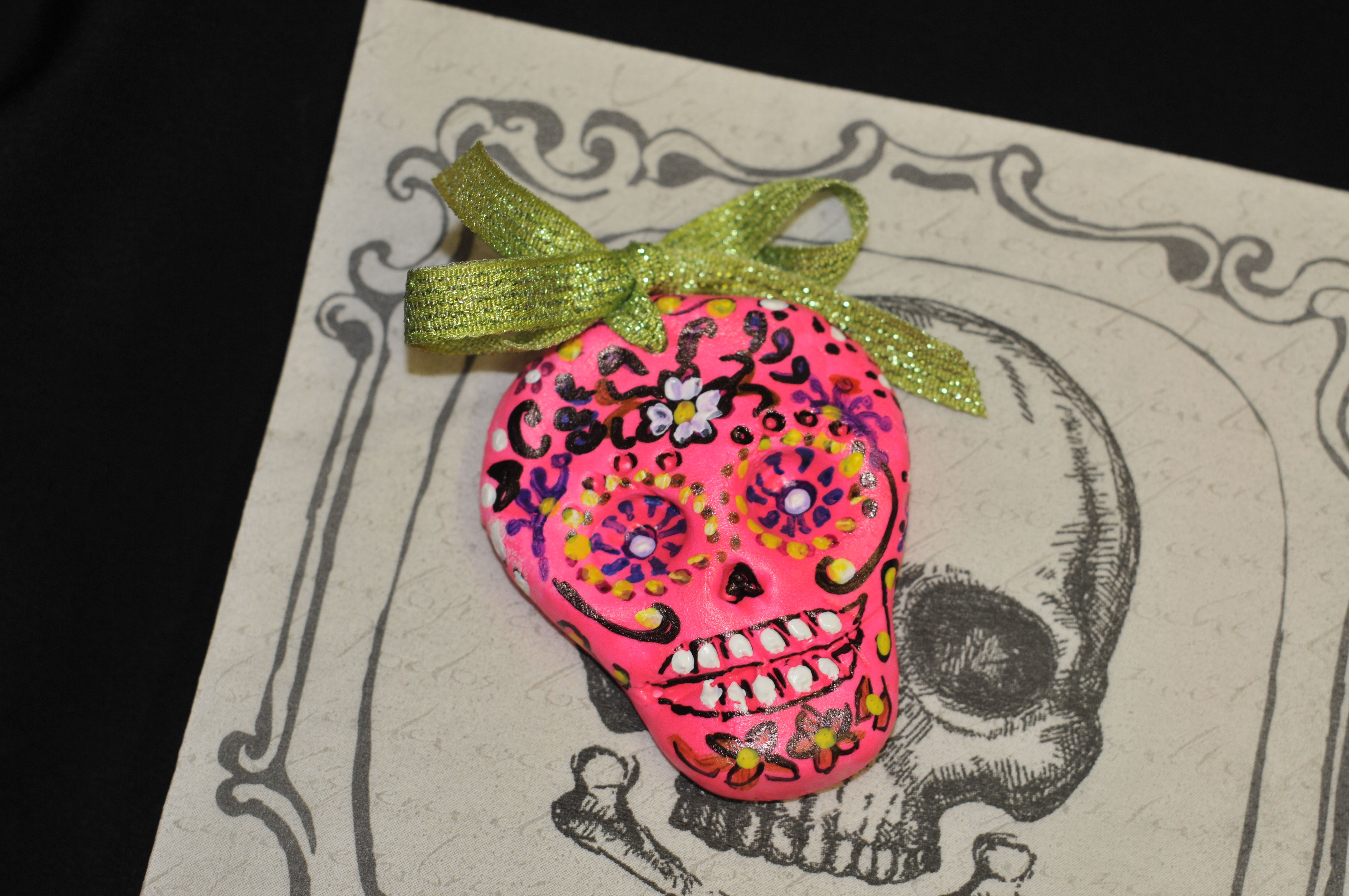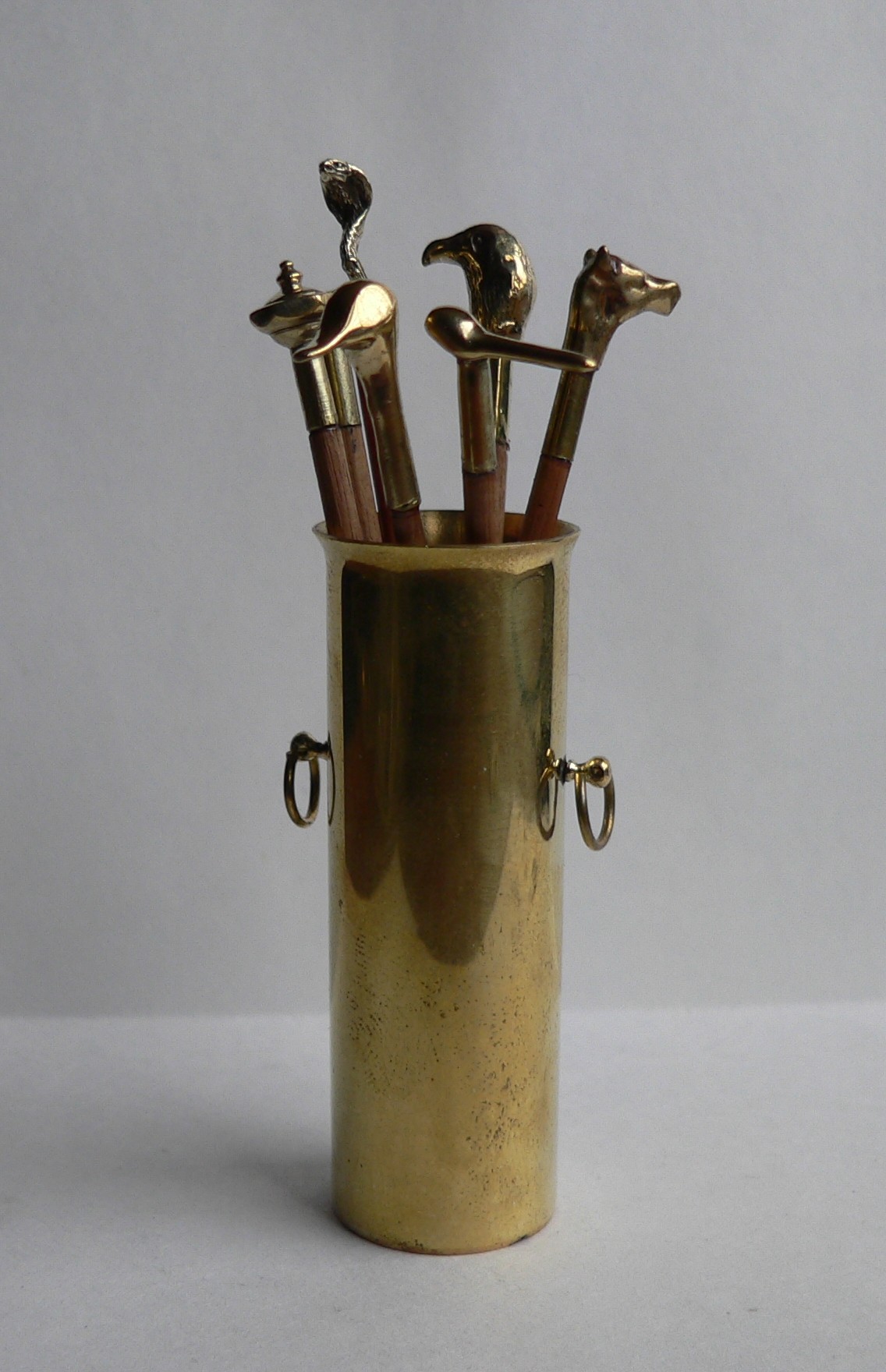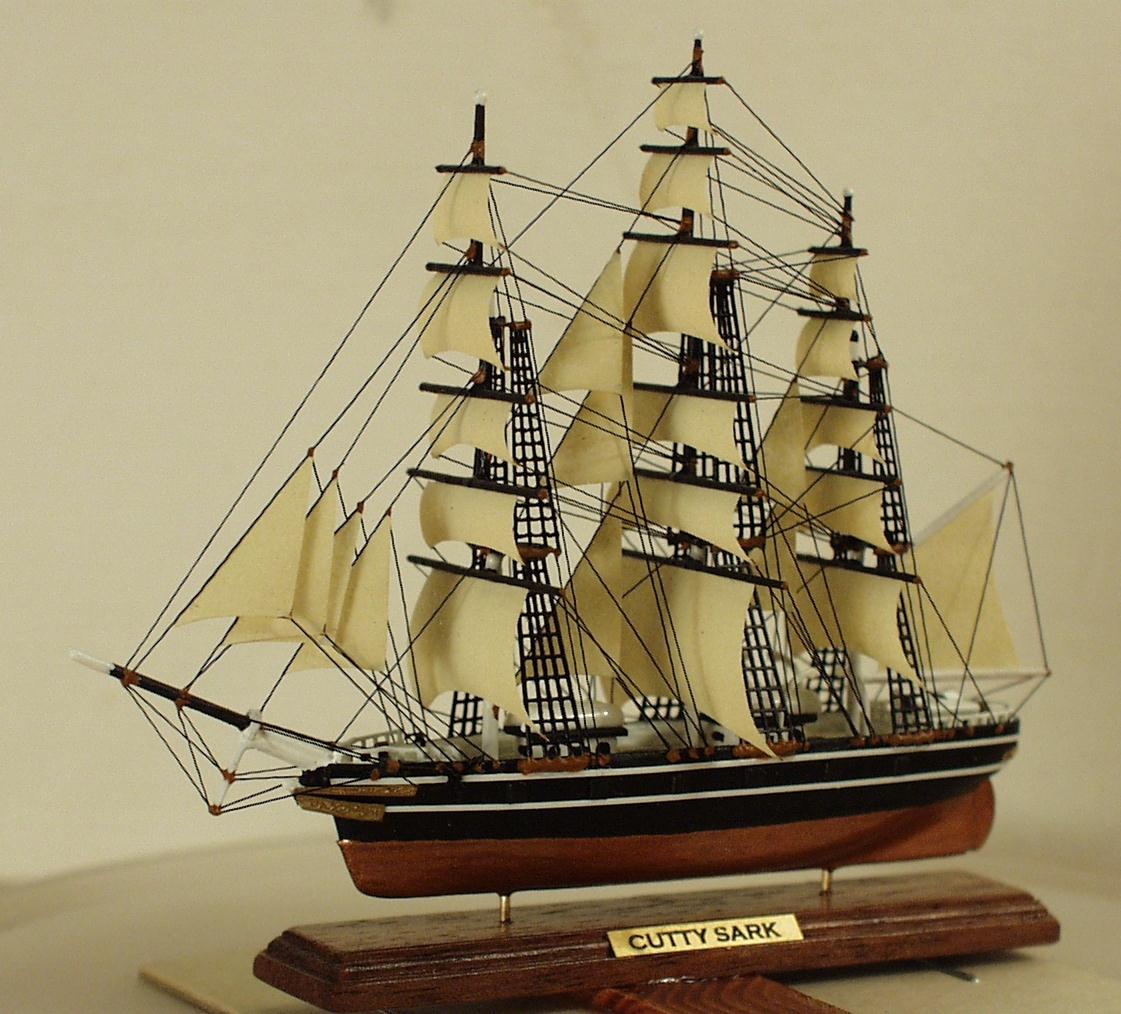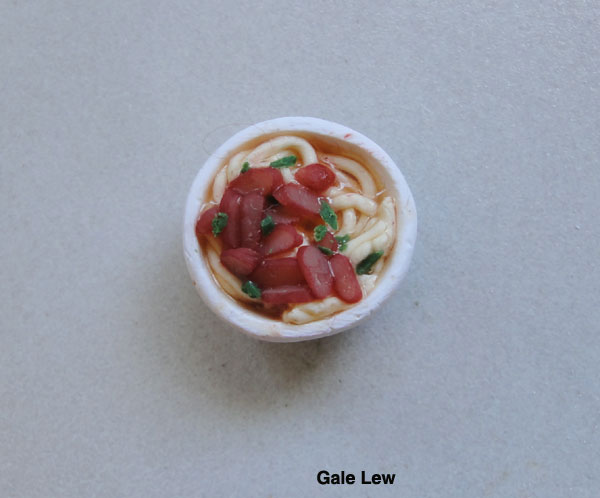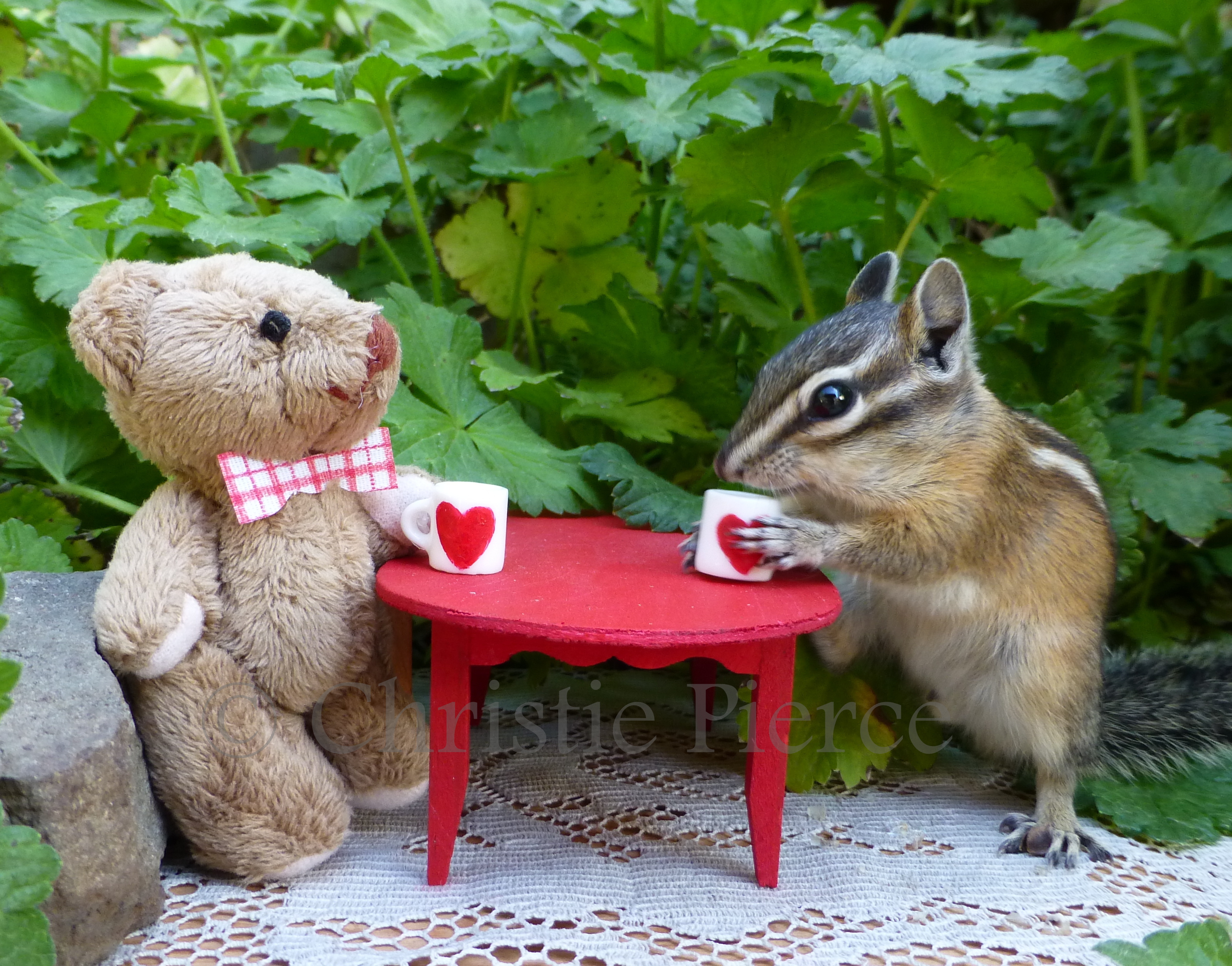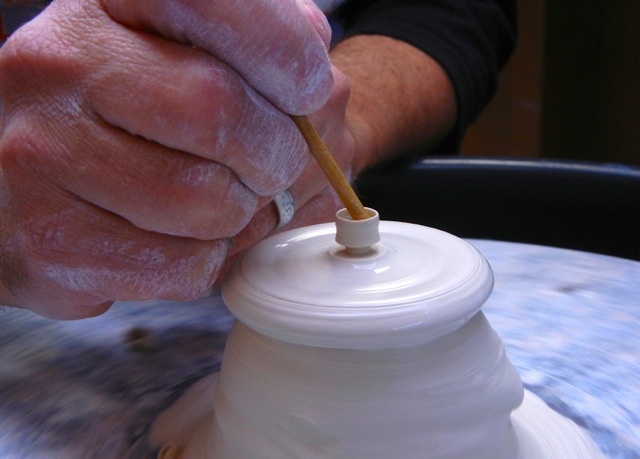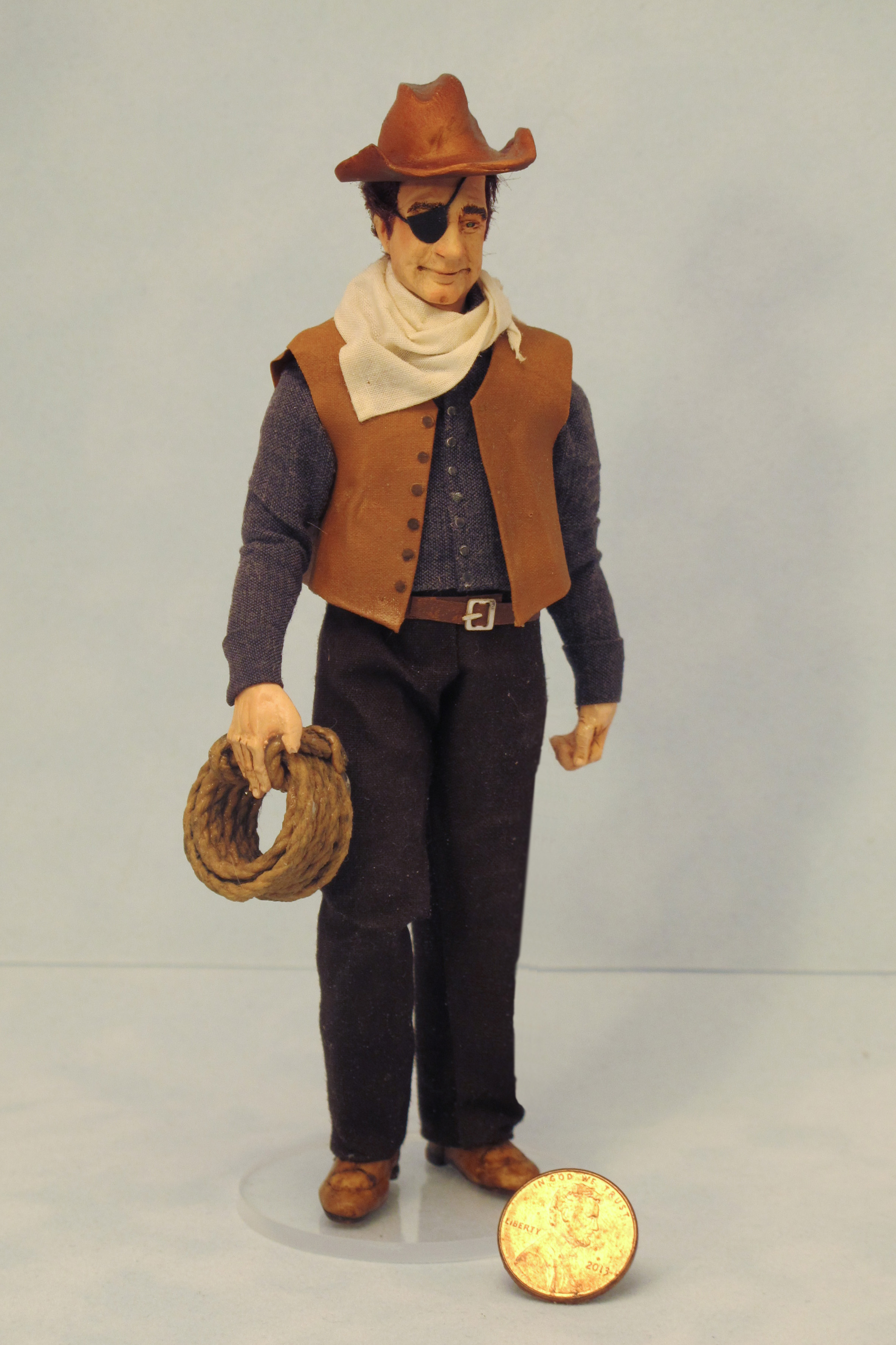Miniature Sculptures and Accessories by Longefellowes Designs
| Website | Daily Mini Studio Visit |
 Describe your background in the arts and your first memories with sculptures.
Describe your background in the arts and your first memories with sculptures.
I’ve been doing something artistic and/or crafty since probably around the age of three. I honestly can’t remember a time when I wasn’t doing something, whether it was painting, drawing, needlework, drafting, sewing, designing, building…the list goes on. I have a lifetime of skillsets and muscle memory built up by now, and though I’m largely self-taught, I’m always looking to learn new skills and apply what I know to new tasks and challenges. I’ve taken classes on a variety of techniques and subjects throughout the years to augment my skill sets. Sculpting didn’t actually begin for me until fall 2006 when I decided (mostly on a lark) to take a polymer clay dollmaking class. Prior to that, I hadn’t sculpted anything (I don’t count the pinch pots ubiquitous to grade school art classes). I discovered that I had a talent for it, and over the course of a year or two, made the switch from cloth dolls to polymer clay sculpting. In winter 2008, I made the switch to 1:12 scale.
Do you remember the first miniatures that made a lasting impression on you?
That’s tough, but I can think of three things that definitely stayed with me through the years and paved the way for a return to miniatures. We had a train set when I was little… I can still smell that rank ozone the transformer puts out. I loved all the tiny details in the cars and engine… itty bitty pistons and wheels, ladders, hatches… the works. I wouldn’t let my parents get rid of it when they downsized, so I have all the cars in a box in storage. I hope to be able to rig up a display track someday.
 I was also fascinated with the accessories that went along with Barbie: the tiny shoes, handbags, clothing, all sorts of ephemera. In fact, I was usually more interested in them than the dolls themselves; the dolls were more a means to an end than the actual focus of my machinations.
I was also fascinated with the accessories that went along with Barbie: the tiny shoes, handbags, clothing, all sorts of ephemera. In fact, I was usually more interested in them than the dolls themselves; the dolls were more a means to an end than the actual focus of my machinations.
I also still have some of the very first actual miniatures I can remember from when I was little: tiny pot metal figures (one was a dog, I believe), a couple of turned jugs/vases, and a few other random things. I can recall exactly the fascination I had with how wee the jugs and goblets were, and the realization that “someone made that. How did they make such a tiny thing?” Miniatures still fascinate me to this day, and mostly for the same reasons.
What scale do you enjoy working in the most?
I’m most comfortable working in 1:12 scale and slightly smaller, probably 1:18 or 1:24 at the smallest. Partly because there’s far more accessories and scale-related items that I can use with my sculpts, or use as inspiration. I occasionally do 1:48, but that’s a real bear.
 I didn’t have any difficulty transitioning from 1:4 down to 1:12 and smaller – it was a very natural thing for me. Working large is just uncomfortable, physically and mentally. I’m short, and have tiny hands–not kidding, I have to buy children’s gloves–and I just find smaller proportioned things to be more relatable, I suppose.
I didn’t have any difficulty transitioning from 1:4 down to 1:12 and smaller – it was a very natural thing for me. Working large is just uncomfortable, physically and mentally. I’m short, and have tiny hands–not kidding, I have to buy children’s gloves–and I just find smaller proportioned things to be more relatable, I suppose.
When I took a sculpting class recently (I took it because it offered a chance to learn to use a new sculpting medium), the bust was worked in near life-size, and it was…difficult, at least at first, because everything just felt ginormous and awkward. I guess you can get used to almost anything, really. Mostly, I’ve found that when switching scales (regardless of how big or small you’re going) keeping things in proportion is probably the thing that requires the most attention; the methods are largely the same regardless of how big/small you’re working.
Daily Mini recently visited the Longefellowes Designs studio — see the photos here!
Do you ever create works of miniature sculpture without the intent to sell them?
Not generally, no, unless you count gift-giving, and I rarely give my sculpts away. I mean, what would I do with all this stuff? The challenge and fun for me is in the making, not so much the keeping. As to favorites, I have a few that I’ve kept (not including class work, which I keep as a matter of principle). One is called “I Need a Jump,” featuring the Bride of Frankenstein’s Monster as a partially bandaged pinup (of course), holding miniature jumper cables. I didn’t make her with the intent to keep her, but I liked her well enough that I decided that if she hadn’t sold by a specific date, I was retiring her and keeping her. And now she supervises me from my “trophy
shelf.”
What’s your favorite style of fireplace to create and why?
Not sure I have a favorite. Visually I like the ornate ones (think Rococo and Baroque), but those are a pain to paint. The flatter-surfaced types are easier to paint with the faux marbling, but don’t have quite as much “presence.” Eventually, I’ll make one in a hybrid style, but I’m going to have to teach myself how to carve wood first. Oh no! I have to learn something new!
Tool, technique or material you could not live without?
That’s tough! I use almost everything! Seriously, that’s the fun of figures; I get to nerd out over the anatomy, and the physics required to get them to balance. And then I get to play with fabric, trims, metal findings, beads, accessories, furniture, or whatever else I decide needs to go with the figure, and all the various tools and techniques that go into all of the above. True multi-media, including sound; I usually wind up swearing at the little buggers at some point.
But back to the question, I’m not sure there’s an answer. Because, other than my eyes and hands (which might be a cheap and possibly pompous sounding answer), I can’t think of anything that I couldn’t figure out how to replace or find another way to make it work. If I think about it, if you take away my favorite knife, I can go find a saw or some other implement of destruction that equally results in bandaged fingers. If you take away my favorite clay, I can go find another clay to use. In fact, I’ve had to do that when manufacturers changed the formulation of their product, so….yeah. Doesn’t mean I’d be happy if you took away my favorite stuff, but I’d learn to cope.
What’s the most challenging aspect of creating a miniature sculpture?
That depends on the scale. The smaller it gets, the trickier it is overall. Half scale figures take almost the same amount of time as a 1:12 scale figure.  Globally though, while getting them to balance on their own is often hard, I’d have to say I have the most difficulty with hands – the clay pieces are so thin and small at that point, the heat from my own hands makes the clay sticky; it’s like trying to sculpt with joint compound (I’ve tried that – it doesn’t work well). So as a result, it’s tricky to get the right proportions and detail level without ruining all my effort due to the tools or my hands melting, sticking, or squashing everything.
Globally though, while getting them to balance on their own is often hard, I’d have to say I have the most difficulty with hands – the clay pieces are so thin and small at that point, the heat from my own hands makes the clay sticky; it’s like trying to sculpt with joint compound (I’ve tried that – it doesn’t work well). So as a result, it’s tricky to get the right proportions and detail level without ruining all my effort due to the tools or my hands melting, sticking, or squashing everything.
What’s the most unexpected material you’ve used in one of your works?
I don’t tend to think of media as anything other than “this fits the purpose, so use it,” so I don’t go out of my way to consider putting something into a piece just for the novelty of having it there. Miniaturists are weird that way; we all just sort of see new purposes for things – a marble might become a crystal ball, jewelry findings become candlesticks, bullet casings get turned into beer steins, wristwatch parts get re-imagined into a variety of steampunk creations. And yes, I’ve done all of those things.
Have a favorite miniaturist you’d like to mention?
Oh, there’s a huge list of people whose work I admire – but if I start listing artists, I’ll inevitably leave someone out accidentally, and I don’t want hurt feelings. But I do have a couple of particularly good friends within the miniatures community. The sort of people who act as a sounding board, give “attaboys” when earned, inspire nefarious ideas, are willing to plot and scheme with me, and most importantly, give a reality check and/or a kick in the ass when I need it, whether or not I’ve asked. You know, the type who stick around even after they find out just how insane you really are. Everyone needs friends like that. So yes, public thanks to both Bill and Deb for the shenanigans and even the occasional boot. You both are awesome.
Advice for beginner artists?
Stop trying to convince yourself that you can’t do something, especially if you’ve never even tried. Just go do it. Everyone starts from ‘zero,’ and it’s not a competition, except against yourself and whatever you just finished. Go try [insert skill here]. And then do it again. And again. I guarantee your second one will be better than the first, and your third better than your second. Take a class, try it out. Heck you might find out you hate [insert thing here], and then you can then take a class in [insert next thing here]. Or you might discover you love doing it. This is why workshops at shows are such great ideas; try before you buy, as it were.
Just go do it. Because you know what? If you wait until you think you’re “ready,” you’ll never do it. Because no one is ever ready for anything. DO IT.
What inspires you?
I get inspiration everywhere. Inside jokes, regular jokes, off-hand remarks during conversations, people watching, even random things I see on the telly, in print, or on the Internet. Doesn’t mean I turn every idea into a sculpted figure, but I keep adding to my list.
Motto that keeps you creating?
I have two that immediately come to mind: “If you don’t ask, the answer is automatically ‘No.’” and “What If…”
In addition, just the desire to continue to learn and improve keeps me moving forward. Every piece I make, the first thing I see once I’m done is where I could have done better—outside of any deliberate exaggerations or makers marks—and, I try to address those issues in the next piece. And the next, and the next. It’s a constant process.
What’s to come from Longefellowes Designs?
I have three upcoming sculpting classes: a full day class at the Philadelphia Miniaturia on Thursday, November 5 (plus I’m also vending at the show), a half-day workshop at D. Thomas Fine Miniatures on Sunday, December 13, and just announced, a half-day workshop at the Sturbridge Miniatures Festival on Saturday, June 4, 2016 (plus I’m also vending at the show). I even occasionally remember to update my website, so as I add shows and classes for 2016, I’ll be listing them.
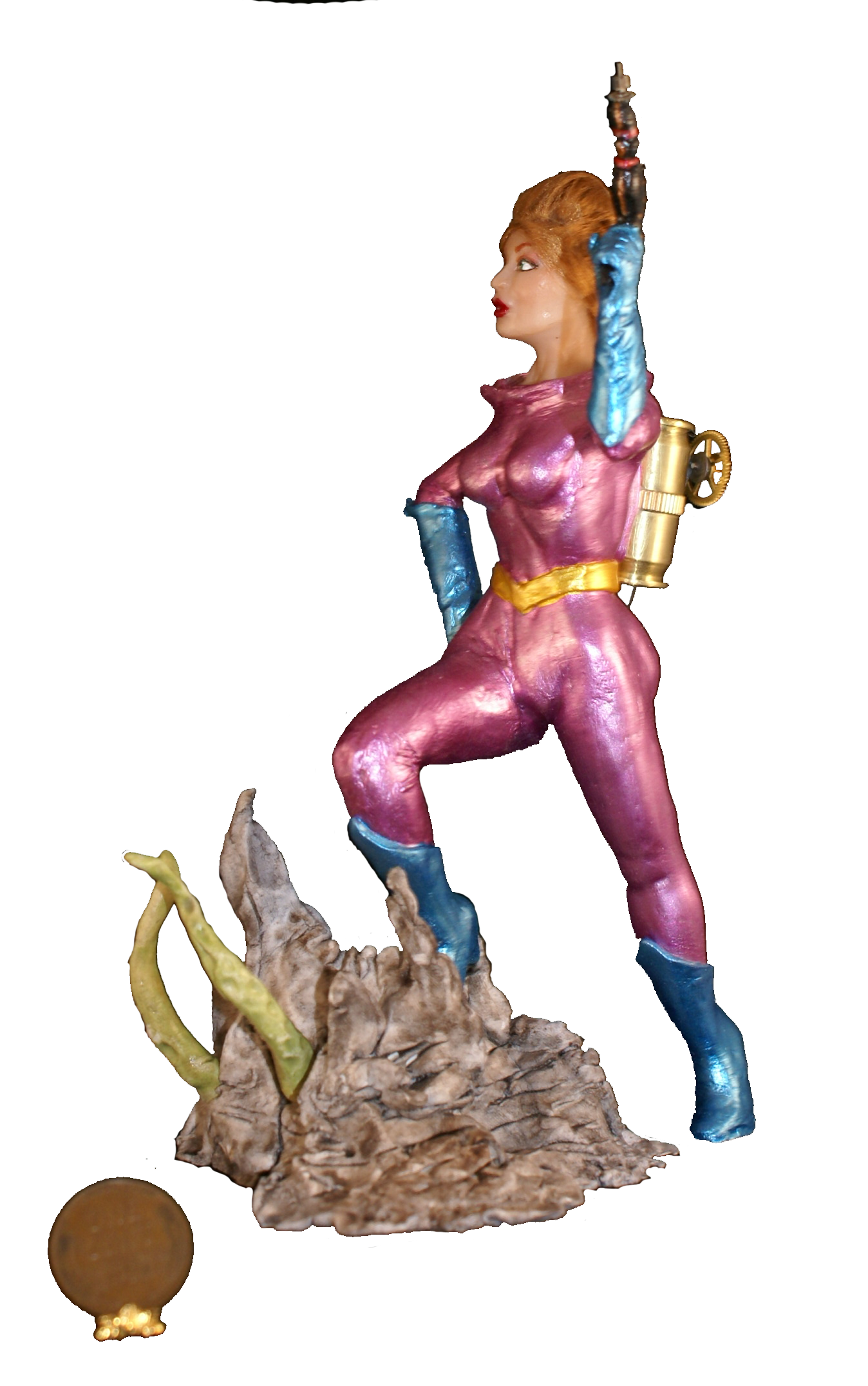 Upcoming projects include some new original fireplace mantel designs that I’m currently building, and of course new sculpts. I have three dolls in progress right now. I also have some commission projects I’m working on.
Upcoming projects include some new original fireplace mantel designs that I’m currently building, and of course new sculpts. I have three dolls in progress right now. I also have some commission projects I’m working on.
Other hobbies and activities you enjoy?
I have more things I like doing than I have time for, both in miniature and in real life. I could probably fill three lifetimes just with the stuff I want to do!! But outside of the impossible (unless someone gives me a TARDIS), I enjoy baking, watching most sports, spoiling the hell out of a few select people, and, not related, cuddling up on the sofa with my weenie dogs. Oh, and the occasional dram of Single Malt Scotch. Purely medicinal, of course.
What do you want miniature enthusiasts to know about you?
Maybe to correct a common misconception, since everyone seems to assume my business name is named after the poet. The truth is, it’s named for my weenie dogs: they are the Longefellowes! As an aside, and not that anyone will really care, but I do not generally like poetry. Longfellow’s or anyone else’s.
Longefellowes Designs was created by Bev Gelfand. You can see many more of her miniature characters and fireplace mantel designs on the Longefellowes Designs website! Have a little look inside Bev’s studio here.
 Tell us a bit about how ACTÍVA Products came to be.
Tell us a bit about how ACTÍVA Products came to be. ACTÍVA supplies many other great products such as our Rigid Wrap which is a highly durable premium plaster cloth which is the best in the industry and a full line of clays such as La Doll, Premier, Activ Clay and Plus Clay. ACTÍVA provides products to complement our product line such as the Activ-Wire Mesh, Flower Art Silica Gel and many others. Our products continue to exceed the industry standard and are all ACMI certified as non-toxic.
ACTÍVA supplies many other great products such as our Rigid Wrap which is a highly durable premium plaster cloth which is the best in the industry and a full line of clays such as La Doll, Premier, Activ Clay and Plus Clay. ACTÍVA provides products to complement our product line such as the Activ-Wire Mesh, Flower Art Silica Gel and many others. Our products continue to exceed the industry standard and are all ACMI certified as non-toxic. For the past 50 years we have continually provided the best customer service to ensure customer satisfaction. ACTÍVA’s products are great for all ages and inspire creativity and the use of your imagination to provide endless enjoyment and fun!
For the past 50 years we have continually provided the best customer service to ensure customer satisfaction. ACTÍVA’s products are great for all ages and inspire creativity and the use of your imagination to provide endless enjoyment and fun! What ACTÍVA items would you recommend for those with a little more art experience?
What ACTÍVA items would you recommend for those with a little more art experience? The best clay for miniatures would probably be Lumina, though some miniature artists actually use Li-Qua-Che which is a liquid papier-mâché in molds. Our Hearty Clay is also a great clay used for miniature clay projects.
The best clay for miniatures would probably be Lumina, though some miniature artists actually use Li-Qua-Che which is a liquid papier-mâché in molds. Our Hearty Clay is also a great clay used for miniature clay projects. What do you want artists and creatives to know about your brand?
What do you want artists and creatives to know about your brand? We are continually creating a variety of new projects that can be accomplished using ACTÍVA products. These include a range of different clay products and other products we offer, available for use by kids and adults. We also include a step-by-step guide on how to replicate these DIY projects.
We are continually creating a variety of new projects that can be accomplished using ACTÍVA products. These include a range of different clay products and other products we offer, available for use by kids and adults. We also include a step-by-step guide on how to replicate these DIY projects.